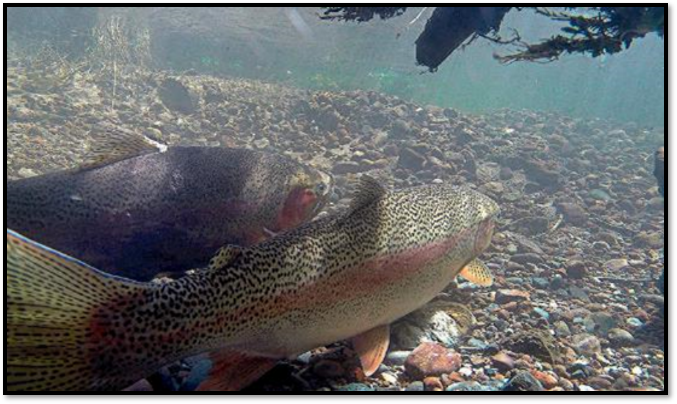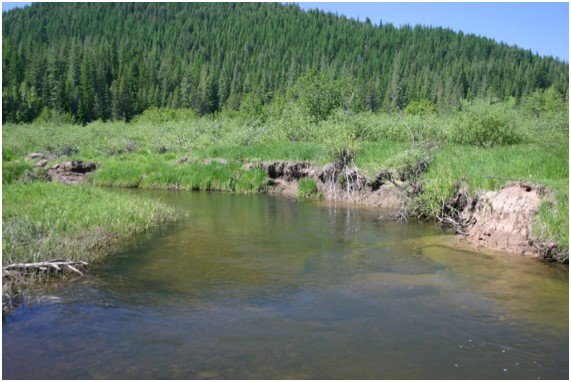Collaboration is Key to Balancing Fish and Wildlife Restoration with Conservation, Idaho's Fish and Game Director Tells Council
- May 13, 2019
- John Harrison

Balancing conservation of fish and wildlife populations with diverse public demands is less like being on a teeter totter and more like standing on a sheet of plywood that’s sitting on top of a bowling ball, Ed Schriever, director of the Idaho Department of Fish and Game (IDFG), told the Council this month at its meeting in Boise.
“There is no stability,” he said.” There are so many different forces acting on wildlife and people who want to interact with it.”
To that end, he said, the Department’s objectives are, among other things, “to sustain Idaho’s fish and wildlife and the habitats upon which they depend, meet the demand for hunting, fishing, trapping, and other wildlife recreation, and improve public understanding and involvement in decision-making.” Schriever spoke to the Council at its May meeting in Boise.
Partnerships and collaboration are important, something that is apparent in the ways the department is funded, he said. The agency receives no money from Idaho taxpayers, but significant amounts from hunting and fishing license fees and from the federal government, particularly the Bonneville Power Administration, which directs money to projects to improve fish and wildlife populations through the Council’s Columbia River Basin Fish and Wildlife Program.
In 2018, Bonneville provided $11.4 million to the IDFG, which constituted 11 percent of its budget. The money comes through a Columbia Basin Fish Accord Bonneville signed with the state in 2018, an extension of an Accord first signed in 2008.
Schriever highlighted a number of projects that are funded through the Accord, including:
- Steelhead and salmon monitoring: Idaho has two intensively monitored watershed projects where well-developed, long-term monitoring programs are designed to determine responses by fish populations to habitat restoration actions. One project is in the Lemhi River Basin, a Salmon River tributary, and the other is in the Potlatch River, a tributary of the Clearwater River. Focal species are Chinook salmon, steelhead, and bull trout in the Lemhi, and steelhead in the Potlatch. Monitoring in the Potlatch River suggests the habitat projects focused on expanding and improving juvenile rearing habitat, particularly winter rearing habitat, are working as intended. There are several high priority, large-scale barrier removal and supplementation projects being planned over the next five years, and modeling predicts that this can result in an 85-percent increase in juvenile fish production. In the upper Lemhi, the work involves restoring historic sinuosity and floodplain connectivity to the river. The goal is to improve juvenile rearing and over-wintering habitat for Chinook and steelhead, and slow the water velocity through the channelized reaches. There are more than 544 restoration projects in the area. So far the projects in the Lemhi have opened 75 miles of previously blocked habitat, restored 352 miles of habitat, added 158 miles of riparian fencing, and increased river flow by 61 cubic feet per second, Schriever said. These projects benefit resident fish such as rainbow, cutthroat, and bull trout, too.

- Fish screens on water diversions: Rotating screens in water diversions keep migrating juvenile fish out of farm fields. IDFG’s screen program is a foundation for the recovery of four ESA-listed species including Chinook salmon, steelhead, sockeye salmon, and bull trout in the upper Salmon River. The 270 screens in the upper Salmon River involve 2,500 water rights. The screens are critical for improving fish passage from critical tributary habitat for spawning, rearing, and cold-water refuges for anadromous fish. Schriever said building relationships and cooperation with landowners has been key to the program’s success, as most of the Chinook salmon spawning habitat is on private property. “This is not just about putting screens in, it’s about maintaining both the screens and the relationships with landowners,” Schriever said. “They have to be maintained or they won’t work.” He added, “without screens, 80 percent of the downstream migrants would be swept into fields and die.”
- Hatchery programs: IDFG produces 10.75 million spring/summer Chinook, about a million sockeye, and 5.75 million steelhead in its anadromous fish hatcheries; all fish are tagged. The state’s Springfield sockeye hatchery, which was new in 2013, initially had a problem with water hardness. Sockeye smolts reared at the hatchery, which has particularly hard water, were released into Redfish Lake Creek in hopes of rebuilding naturally spawning runs into Redfish Lake, but the water in the creek is extremely soft, and many fish died. Through careful research IDFG and NOAA staff developed an acclimation program at the Sawtooth Hatchery, which overcame the stress of the change in water chemistry. The state now has two sockeye hatcheries working to recover and rebuild the endangered species, one in Eagle near Boise, and the other at Springfield. Both are funded by Bonneville through the Council’s fish and wildlife program.
- Wildlife mitigation: With several groups of projects -- one in northern Idaho at Pend Oreille Lake, one in Central Idaho in the area of Dworshak Dam, and one in Southern Idaho -- the state has settled nearly all of Bonneville’s wildlife mitigation debt with the state, Schriever said.
Schriever praised the long collaboration with Bonneville, the Council and many others for helping to restore and rebuild fish, wildlife, and habitats in Idaho. He said the Accord with Bonneville “provides certainty and funding commitments over longer timeframes to allow for planning, project implementation, and monitoring.”



